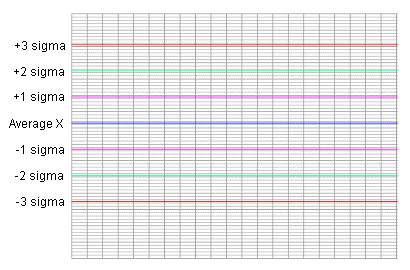We have talked a great deal about the importance of maintaining the process aim as near to the target as possible. If you recall from The Voice of the Process, we looked briefly at the distinction between aim and precision, and said that it would always be a mistake to adjust the aim of a process before there was a clear signal that it was operating off target. Exercise 5 on the bead board demonstrates what can happen in a traditional environment when the operator is left to try and estimate how the process should be adjusted to keep it on target. The result is usually frequent minor adjustments based on intuition and experience, which generally have the effect of increasing the overall variation in the output. In order to be sure whether or not an adjustment in the process aim has been successful, one needs some means of testing what effect it has had. One way to do this is to use a series of periodically gathered individual measurements and plot them on a chart for individual values. The individuals chart will use the value of sigma(X) to calculate the control limits. But in this case, it is desirable to mark out the lines for each sigma range. Such a chart is shown below.  |